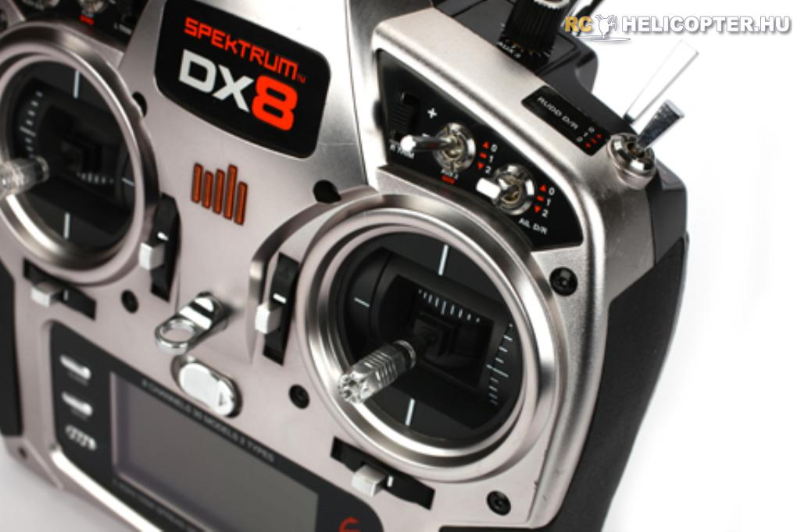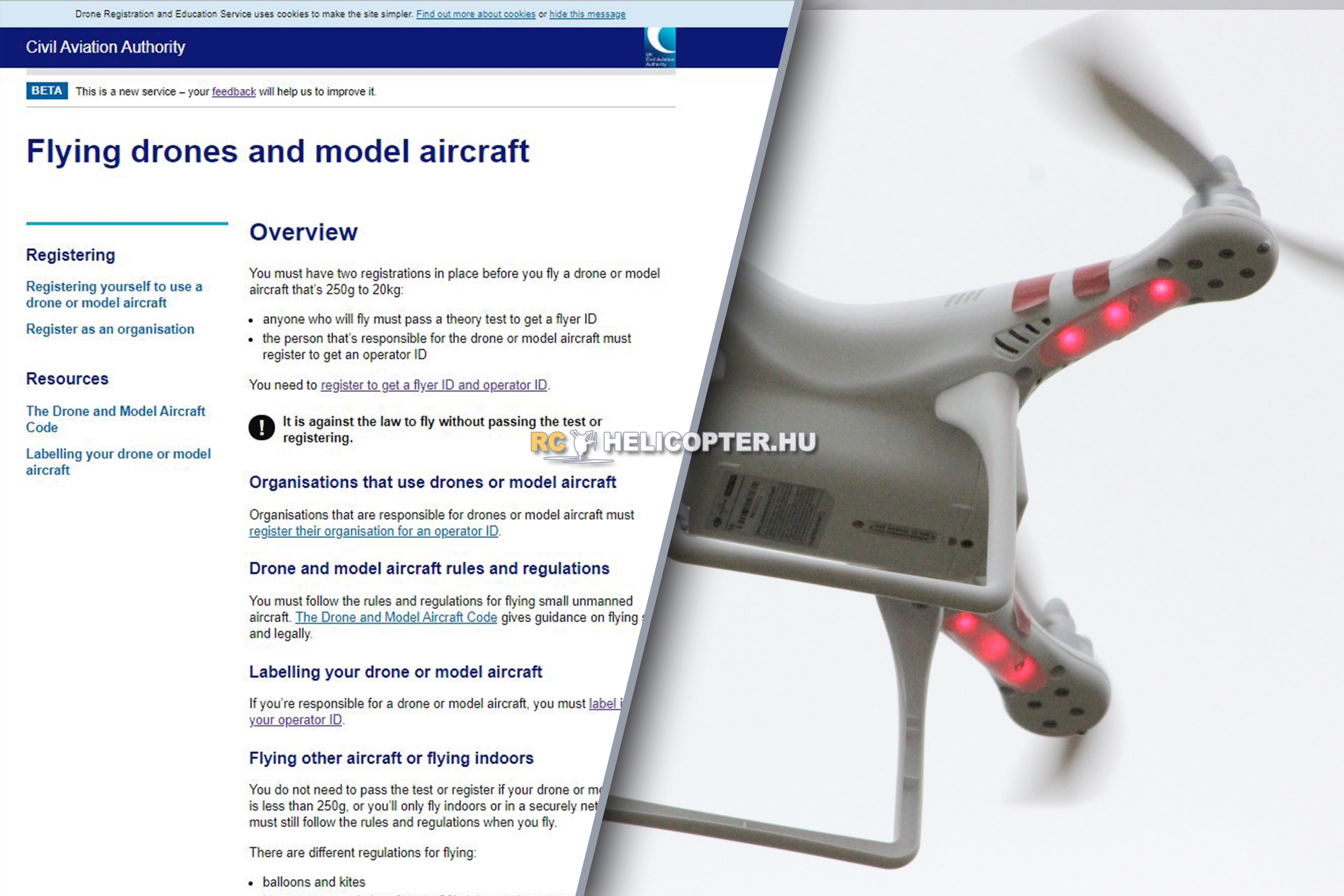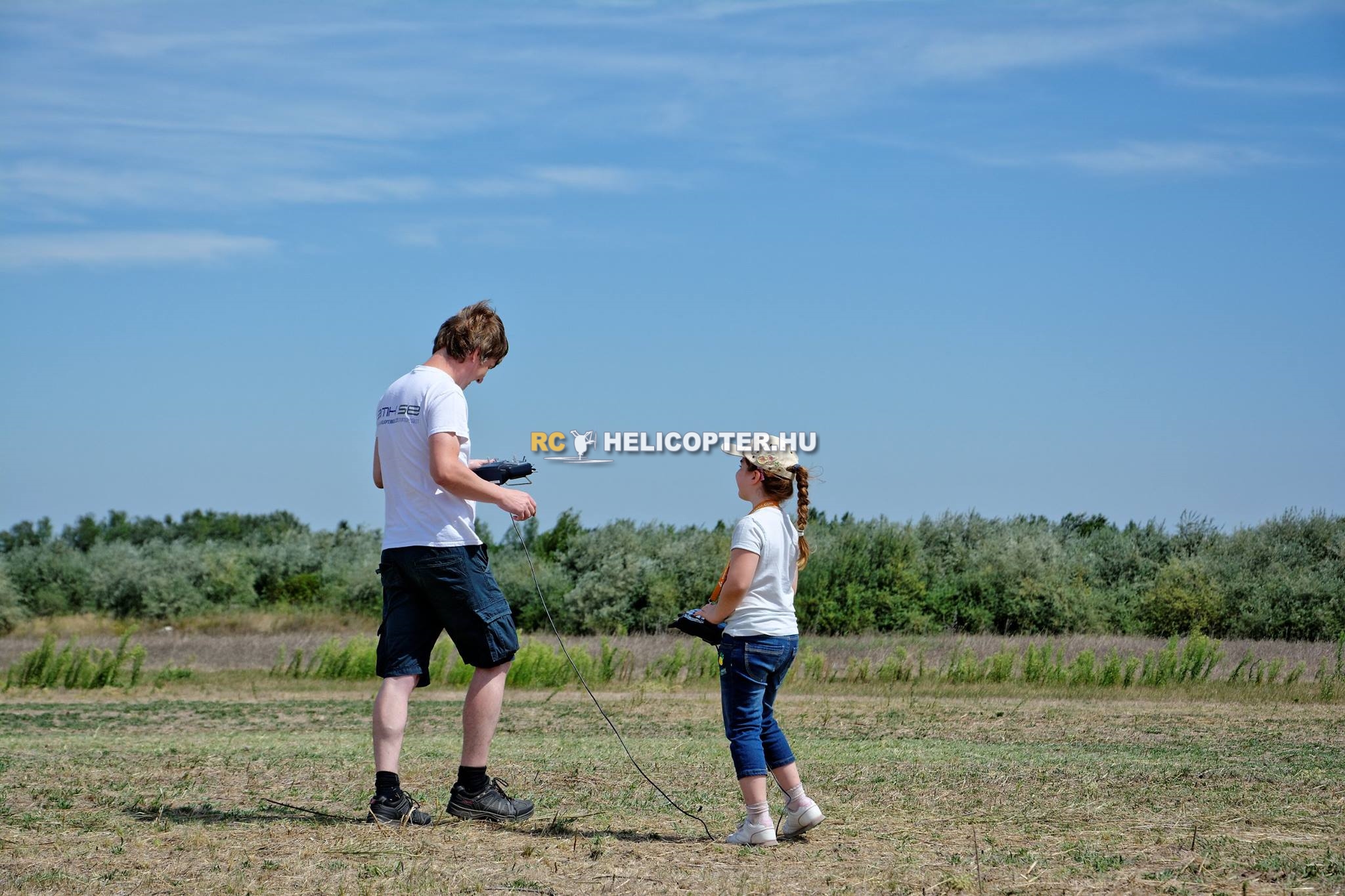How to do - The first steps
All you need to know briefly
How to start RC helicopter flying? What to know? What to be aware of? All these questions will be answered here. Because time is money - and we have neither time nor money - we keep it short.
There are more ways, how to learn flying with RC helicopters, but we will discuss the most straightforward way. It doesn't mean necessarily this is the only good way, just the most typical and most efficient form of starting the hobby.
1. Buy a transmitter
It sounds simple, but it is not. There will be questions to answer. Most important is the number of the channels: 6 minimum. 6 channels are enough in most cases, however nitro helicopters require 7, scale helicopters (they look like the true helicopters) even more. Buy 2.4 GHz transmitter, nobody uses 27, 35 or 40 MHz anymore. Then a question - which stick layout. There are 4 different modes: Mode 1, Mode 2, Mode 3, Mode 4. Choose Mode 2 - this is the most typical among the RC helicopter pilots, almost all the trainer videos are recorded in Mode 2.

Finally: which brand - this depends on many factors and personal preferences, but we would recommend the following brands:





There can be good transmitters from other manufacturers, but these the most typical transmitters for RC pilots, and when you will need help, it's not disadvantageous when somebody know your transmitter.
Where to buy
2. Get a simulator
VERY VERY IMPORTANT! Almost nobody learnt to fly with no simulator, and even the best pilots are still practicing in simulator. RC helicopter flying is a difficult activity. It requires complex hand moves, nobody can even take-off,hold then land a helicopter with no simulator. When you can hover in front of you in 360° for five minutes then you can land the helicopter, then you can try it in real life.
Our recommendations:
3. Know the law
Now it is more or less common in all countries, or it will enter in force you must register yourself and/or pass a test. As you are responsible for your flight, you must know the local rules. These rules are vary, but they are available on the state's website or the local aviation authority website.

Basic principals in EU: altitude limit is 120 metres (400 feet), you must register yourself if you are flying outdoor and the model is heavier than 250g or faster than 19m/s. Detail rules are vary, however it is enough and possible to register in ONE EU member state only, the registration has to be recognised by all other member states.
Also a model flying association needs to be there in your country, which tells you more about the local rules and obligations.
4. Find someone to help you
It is very rare when somebody can learn to fly on his own, and this means you have no technical problems. It is easier to find somebody flying already, to find a club where the members can help you. If you don't know something, then ask. It is still better to ask a silly question than to have a crash or an accident.

How to find a club? The local association of modellers can help you, or find one with Google, Bing, Ecosia or Yahoo or any alternatives.
5. Buy a helicopter
Now you can buy a helicopter. The ideal beginner helicopter is not too small and not too big either. The small one is moving quick, hard to react, a big one is terrifying. The typical beginner helicopter is between 300 and 550 class, which means one rotor blade is this long in millimetres (Align sizing is different: 450-550). It can be brand new or used one, but make sure, the spare part supply will be okay in case of a crash.

Don't buy cheap copycat helicopters. These clones will be very expensive finally. They are not so precise, this is why they are cheap. And it is more than enough to watch yourself and your hands, you will have no chance to react to the helicopter's stupidities. You will more likely crash it. And you can crash it easier due to the quality of the parts as well.
Don't care about the fanciness yet, you are learning now, the most important things are the quality and the prices of the spare parts, and how easy to fix a broken helicopter.
Our recommended brands:






6. Practice, fly, crash, fix and fly again
Don't rush it. Take your time, when you know one thing, you can go one step further. Hover first. When you can hold the helicopter in one position certainly for 5 minutes, then turn to 45° and hover again, then turn sideways, hover. Finally hover with nose-in. If you can hold the helicopter there for 5 minutes, you can start flying. First sideways, then in direction. Follow the learning guidelines. It will take few weeks or months before you can fly a simple figure 8 safely.
You will crash, sooner or later but you will. Don't freak out, take the helicopter apart on the same day or the very next day, sum up what you need to replace, at least you have a list. When you can afford it, order the parts, then fix the helicopter- Get back on the horse as soon as possible. If you want to take a break, do it with no crash.

But if you want to get somewhere in the hobby, practice every possible days in simulator. Fly as much as you can. It is important not to have longer breaks between flyings than a week (few days ideally), and practicing in simulator every second day (every day ideally). A simulator practicing should not be less than 30 minutes and not more than 90 minutes either. To short time worth nothing, too long time will drain your energies as it is a really hard learning process.
When you are going to fly, plan 6 flights minimum, and not more than 10-15 in a day. The first three flight will be warming up, the rest can go in learning. Everybody has a particular number of maximum flights in a day. Exceeding the number will result less safe flights and higher risk to crash the helicopter.
And don't worry, a little stress is always with you, this is why we all do it for: adrenalin shock.
Finally, even the best pilots, like SakkarinCd Konghton, Kenny Ko, Kan Poonnoi, Alan Szabo Jr. Kyle Dahl, Tareq Alsaadi have started it like you. Just they never gave up.











